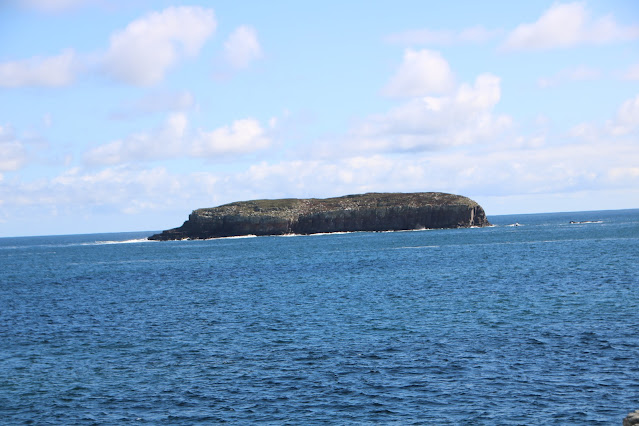Sep 21 - Trinity
A free day in Trinity and we head to Cape Bonavista.
Paint crew.
Every house has a bin like this yellow one. Some have painted them to resemble food products. They are meant to keep the animals away from the garbage.
We are too late for puffins in Elliston. But it is also the root cellar capital of the world.
Elliston has more than 130 documented root cellars in the small town and surrounding area. Of those, half are still in working condition and used today.
Titled "Home from the Sea," sculpted by Morgan Macdonald, dedicated on June 19, 2014, the statue depicts the last moments of Reuben and Albert John Crewe, who were later found frozen together on the ice.
Marine resources were critical in shaping Atlantic Canada's human history. Aboriginal peoples fished here before the 16th century, when European mariners created a thriving international trade based on cod. In Newfoundland and Labrador, the bounty of the sea gave rise to hundreds of coastal communities (outports) and a distinctive maritime culture. Located in Bonavista, historically a prolific fishing community, the James Ryan premises is one of the last surviving examples of a 19th century mercantile complex involved in the inshore, seal and Labrador fisheries.
Wood stacked for the winter.
Garbage bin painted in the colours of the Newfoundland Tricolour, or the Pink, White and Green, is an unofficial flag seen in the Canadian province of Newfoundland and Labrador.
The design originated in the late 19th century with the Newfoundland Fishermen's Star of the Sea Association, an aid and benefit organization established in St. John's in 1871 by the Catholic Church. The flag was unofficial but the official banner of the association was a green background with a white star and a pink cross in the centre. The Star of the Sea is Polaris, the North Star, which was very important in navigation. Mary, mother of Jesus, is also known as Our Lady, Star of the Sea in the Catholic Church.
We stopped in Port Rexton because the brewery does gluten free beer.


























.JPG)
.jpg)
.jpg)
.jpg)
.JPG)
The memorial and statue are both poignant.
ReplyDelete